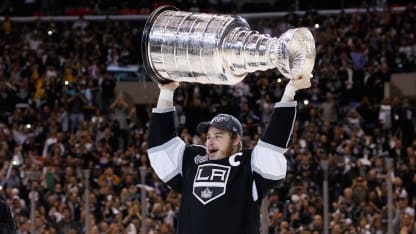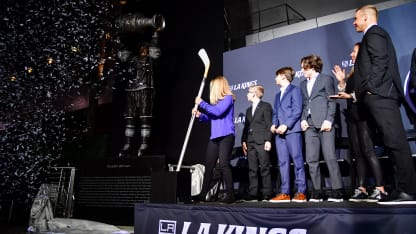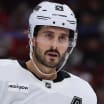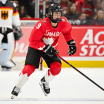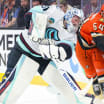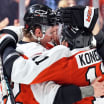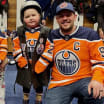Dustin Brown received a call from Luc Robitaille on May 15, 2022, the day after his NHL career ended.
The forward had announced his decision to retire, the Los Angeles Kings had lost to the Edmonton Oilers in seven games in the Western Conference First Round, and the Kings president wanted to see him.
When Brown arrived at his office, Robitaille told him Los Angeles would retire his No. 23 and unveil a statue of him in front of the arena.
A statue?
“I go, like, ‘Luc, who has statues out there?’” Brown said. “And he’s like, ‘In general? Or, like, hockey players?’ ‘Let’s just start with hockey players.’ He goes, ‘Well, me and Wayne.’”
Brown reminded Robitaille he was a legend. "Wayne" was Wayne Gretzky.
“I just said, ‘I’m not going to lie,’” Brown said. “‘I’m a little uncomfortable.’”
Robitaille reminded Brown he had done something twice that Robitaille and Gretzky hadn’t done once with the Kings: win the Stanley Cup.
“In that moment,” Brown said, “it felt good.”
Brown wasn’t a generational talent. He was cut from a select team representing the state of New York at age 15, and after a quick rise as a prospect, he found he needed to make it in the pros with grit.
Yet he spent his entire 18-season NHL career with one team and was Los Angeles' all-time leader in games played (1,296) when he retired. (Center Anze Kopitar is now No. 1 at 1,313.) He was captain from 2008-16, leading them to the Cup in 2012 and 2014. He received the Mark Messier Leadership Award after the second championship.
He ranks seventh among United States-born players in NHL games played and was the second American to captain a Cup winner, after defenseman Derian Hatcher of the Dallas Stars in 1999.
He represented the U.S. in the Olympics twice (2010 and 2014), the IIHF World Championship four times (2004, 2006, 2008 and 2009) and the IIHF World Junior Championship twice (2002 and 2003), winning silver in 2010 and bronze in 2004.
And so, he'll be inducted into the United States Hockey Hall of Fame with Brian Burke, Katie King Crowley, Jamie Langenbrunner and Brian Murphy at a ceremony in Boston on Wednesday.
